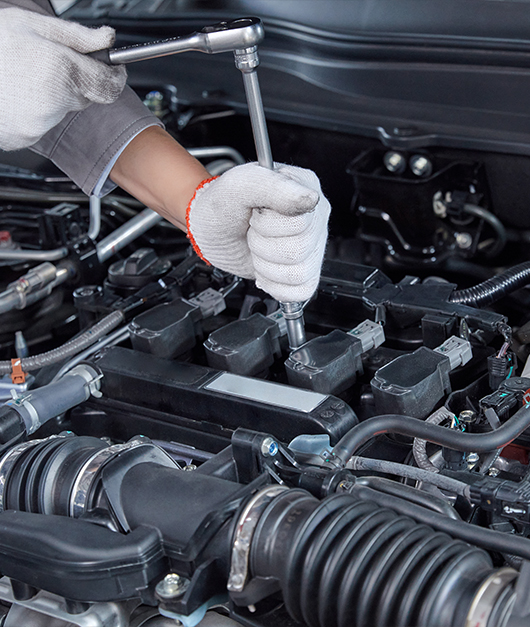- Travel‑friendly size fits easily in a car trunk or toolbox
- Ideal gift for car enthusiasts, DIY hobbyists, and professional technicians

- Travel‑friendly size fits easily in a car trunk or toolbox
- Ideal gift for car enthusiasts, DIY hobbyists, and professional technicians
|
MEAS |
G.W./N.W. |
Q'TY |
|
48.5x32.5x37.5CM |
18.1/17.6KGS |
2SETS |
Ergonomic design: The handle is wrapped in anti-slip rubber, providing a stable grip and reducing hand fatigue, ensuring comfort even during prolonged work.
It is precision forged with high-quality chrome vanadium steel (Cr-V), with excellent hardness and torque bearing capacity, is strong and durable, not easy to deform, and meets high-strength operation needs. The surface is mirror polished and chrome-plated to effectively prevent rust and corrosion, which not only extends the service life of the tool, but also facilitates cleaning and maintenance.
In order to maintain the best performance of the sleeve tool, it is recommended to wipe the surface stains and oil stains in time after use and store them in a dry and ventilated place. Regularly adding a small amount of anti-rust grease to the moving parts can effectively prevent rust and lag.

Available for OEM and ODM, design based on our professional engineer team and mould factory.
We have our own machining workshop. So we can directly provide high-quality products.
In the fields of mechanical maintenance, automotive repair, and professional engineering, the importance of the "DR. SOCKET WRENCH TOOL" cannot be overstated. A set of high-quality socket tools not on...
READ MOREFacing the challenges of heavy-duty, general-purpose, and precision applications, how has Shangyu Fuxin secured the core positions in the annual Deep Socket Wrench Tool rankings? This article reveals ...
READ MOREThe 121PCS COMPLETE SOCKET SET (1/4"&1/2"&3/8") is a versatile, travel-friendly toolkit designed to meet the diverse needs of automotive professionals, industrial technicians, and DIY hobbyist...
READ MOREWhy is this tool set ergonomically designed?
Ergonomic design is a design concept that focuses on human experience and efficiency, aiming to improve the comfort, stability and operability of tools. For this tool set, the main reasons for ergonomic design include:
Improved comfort: The handle is coated with non-slip rubber, which can provide a comfortable grip during long-term use and reduce hand fatigue.
Increased stability: The non-slip rubber-coated handle can provide a more stable grip, reduce the sliding or loss of control of the tool during use, and increase the stability of operation.
Reduced hand fatigue: Since the handle design conforms to the ergonomic principles, users can hold the tool more easily during long-term work, reduce hand fatigue and improve work efficiency.
Improve work efficiency: The comfortable handle design and stable grip can make workers more focused on the work task and less distracted, thereby improving work efficiency and accuracy.
What is a non-slip rubber-coated handle?
A non-slip rubber-coated handle refers to a handle in a tool set that is covered with a layer of non-slip rubber material. This design helps to increase the grip and stability of the tool while providing a comfortable feel. The handle with non-slip rubber coating can also effectively reduce hand slippage and improve work safety, especially in wet or greasy working environments. In general, the non-slip rubber coated handle is designed to improve the operability and comfort of the tool.
What are the advantages of ergonomically designed tool sets?
Ergonomically designed tool sets have the following advantages:
Improve work efficiency: The comfortable handle design and stable grip can make workers more focused on the work task and less distracted, thereby improving work efficiency and accuracy.
Reduce hand fatigue: Since the handle design conforms to the principles of ergonomics, users can hold the tool more easily during long-term work, reduce hand fatigue, and improve work efficiency.
Increase work safety: A stable grip can reduce the risk of accidental slippage or falling of the tool, reducing possible injuries during work.
Improve operational control: A comfortable grip makes it easier for workers to master the tool, so that they can operate more accurately and avoid damage or errors caused by improper operation.
Increase job satisfaction: Provide a comfortable working experience, reduce fatigue, and make workers more willing to use these tools for a long time to complete tasks, improving job satisfaction.